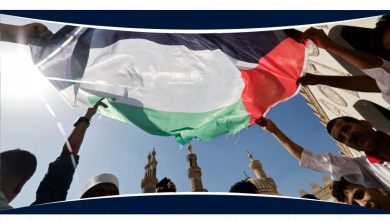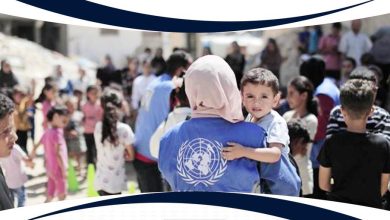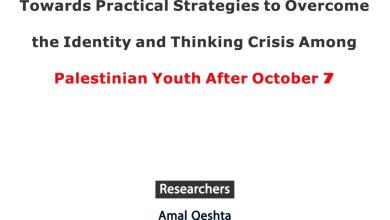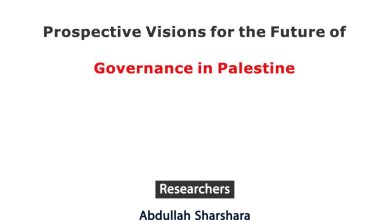Fighting poverty in the Gaza Strip requires developmental interventions

By: Omar Shaban
The Gaza Strip is getting poorer every day that passes, and where the middle-class, which plays an important role in maintaining balance and harmony for a healthy society is constantly shrinking, poverty is skyrocketing.
All credible reports issued locally and internationally confirm that more than two thirds of the Gaza population of 2 million people are poor and are unable to provide the minimum requirements for a decent living. Also, a large percentage of those working with low wages fall into the category of the poor. These reports are validated in reality by the prevalence of begging and the emergence of new forms of social aberrations and crimes. Low rates of marriage, high divorce rates, especially among newly married and high dropout rates from schools and universities. Not to mention the great tendency in both intellectual and actions of extremism and the rejecting the other. There is no doubt that the siege imposed on the Gaza Strip and the multiple wars are the main reasons for these tragic situations, as well as the significant decline in private and institutional investment and the decrease in international support for private and international institutions operating in the Gaza Strip. Also, the migration of social capital & competencies.
But this does not deny that the relief support programs implemented in the Gaza Strip for several years have not succeeded in reducing or even freezing poverty. This article assumes that the amount of cash and generous aid that entered the Gaza Strip, plus large local revenues, could have been used much better.
In the case of the Gaza Strip, , it was necessary to search for interventions that would achieve the relief and development dimensions in a balanced manner. By comparison, the huge difference in terms of development and sustainability impacts can be easily noticed between the projects of rehabilitation of Salah El-Din Street and the beach road, which changed the shape and heart of the Gaza Strip and between marriage projects for young people that created endless social problems. Relief projects were found to be temporary and earmarked for very weak segments and could not be a substitute for other interventions.
In this article, I will present, for example, the development impacts that can be achieved by injecting $30 million a month into development interventions with a long-term impact. Here are some suggestions, including but not limited to:
- Building schools: The Gaza Strip suffers a shortage of more than a hundred schools. Due to the blockade and the prevention of entry of building materials for many years, it caused massive crowding in the classrooms. There is also a need to build 15-20 new schools annually to meet the normal population’s growth. The average cost of building a school is US$ 1 million. By investing US$ 30 million dollars a month, 20-25 new schools can be built every month (220 schools annually).
- Paving roads: Hundreds of kilometers of main, municipal, and agricultural roads still need paving, rehabilitation, and improvement. The average cost for paving a road is $ 1 million per one kilometer. By allocating US$ 30 million per month, it is possible to pave 20-25 kilometers per month, or 220 kilometers per year. This alone can change the face and the heart of the Gaza Strip. Paving and rehabilitating roads is one of the milestones of urbanization, reduces pollution, improves public health, promotes economic activity, and imperatives of sustainable development.
- Cleaning, beautification and cultivation of the Gaza Strip sea coast: This project is no less important than building schools, this project means allocating green areas and small gardens on the sea shore from Beit Hanoun to Rafah with the removal of encroachments and residues, including turning the sea road from areas to throw waste Construction waste, mostly to a green garden along the Gaza Strip. Thousands of young people can be employed in this project, which will work to beautify the Gaza Strip and create a healthy and fit environment for tourism, especially other economic activities.
- Restoration of thousands of modest housing in the camps and crowded neighborhoods in the cities of Gaza, Khan Yunis and Rafah and in the slums as well. This improves housing and public health conditions for tens of thousands of families in the sector. The right to clean housing is one of the economic and social rights provided locally and internationally. Such an intervention in the restoration of homes will revive hundreds of small companies, contractors and industrialists who have become unemployed due to the poor of construction activity. It will also improve public health and reduce domestic violence.
Certainly, it is not logical to spend all international aid in one area only. Rather, a plan should be developed that proposes various interventions at the same time, such as building some schools, paving some roads, and renovating a few hundreds of houses within a diversified plan. The programs apply to many years. To confirm the validity of this vision: – School building and road paving projects contribute no less than 30-40% of the total cost to direct and indirect labor. With a simple calculation: Paving a kilometer-long road costs a million dollars, a third of this amount goes to workers. This means a $ 400 salary exchange for 250 workers and engineers for three months. Another example, building a school that costs a million dollars, a third of that amount for workers and engineers, means paying a salary of 400 dollars to 100 workers and engineers for a period of nine months.
The developmental impact of these interventions must be strengthened by enhancing dependence on the local products, such as: Using locally manufactured tiles instead of ceramics, for example. Also, the requirement to intensify dependence on work and reduce the use of mechanization as much as possible.
As the construction sector intersects with dozens of other economic activities, activating the construction sector helps a lot in activating economic activities. Where many projects will be able to prosper and achieve profits and then pay taxes later.
An important point here is that such qualitative interventions within an integrated plan will encourage many Western governments and international institutions, to intervene by helping to support such interventions.




